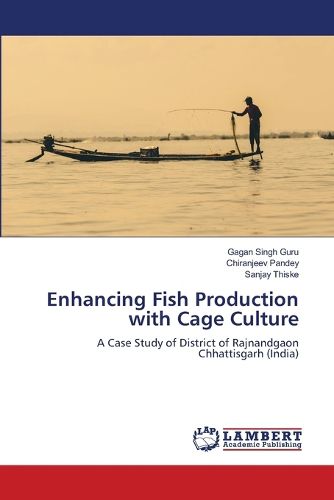Readings Newsletter
Become a Readings Member to make your shopping experience even easier.
Sign in or sign up for free!
You’re not far away from qualifying for FREE standard shipping within Australia
You’ve qualified for FREE standard shipping within Australia
The cart is loading…






This title is printed to order. This book may have been self-published. If so, we cannot guarantee the quality of the content. In the main most books will have gone through the editing process however some may not. We therefore suggest that you be aware of this before ordering this book. If in doubt check either the author or publisher’s details as we are unable to accept any returns unless they are faulty. Please contact us if you have any questions.
Situated amidst the picturesque landscapes of Chaowki, Mohla, and Manpur, the Mongra Reservoir is a vital aquatic resource in the region. This expansive reservoir, known for its serene beauty and ecological significance, has also become a focal point for innovative aquaculture practices, particularly cage culture. Cage culture, a method of fish farming that involves raising fish within floating enclosures or cages in natural water bodies, has gained prominence in Mongra Reservoir due to its efficiency and sustainability. This method allows for controlled environments within the reservoir where fish can grow and thrive, while minimizing the impact on the natural aquatic ecosystem. The adoption of cage culture at Mongra Reservoir is driven by the growing demand for high-quality fish, coupled with the need to preserve the reservoir's ecological balance. By implementing cage culture, local aqua culturists can enhance fish production without depleting natural fish stocks or disrupting the reservoir's delicate ecosystem. This introduction of cage culture not only promises increased fish yields but also offers economic benefits to the surrounding communities.
$9.00 standard shipping within Australia
FREE standard shipping within Australia for orders over $100.00
Express & International shipping calculated at checkout
This title is printed to order. This book may have been self-published. If so, we cannot guarantee the quality of the content. In the main most books will have gone through the editing process however some may not. We therefore suggest that you be aware of this before ordering this book. If in doubt check either the author or publisher’s details as we are unable to accept any returns unless they are faulty. Please contact us if you have any questions.
Situated amidst the picturesque landscapes of Chaowki, Mohla, and Manpur, the Mongra Reservoir is a vital aquatic resource in the region. This expansive reservoir, known for its serene beauty and ecological significance, has also become a focal point for innovative aquaculture practices, particularly cage culture. Cage culture, a method of fish farming that involves raising fish within floating enclosures or cages in natural water bodies, has gained prominence in Mongra Reservoir due to its efficiency and sustainability. This method allows for controlled environments within the reservoir where fish can grow and thrive, while minimizing the impact on the natural aquatic ecosystem. The adoption of cage culture at Mongra Reservoir is driven by the growing demand for high-quality fish, coupled with the need to preserve the reservoir's ecological balance. By implementing cage culture, local aqua culturists can enhance fish production without depleting natural fish stocks or disrupting the reservoir's delicate ecosystem. This introduction of cage culture not only promises increased fish yields but also offers economic benefits to the surrounding communities.